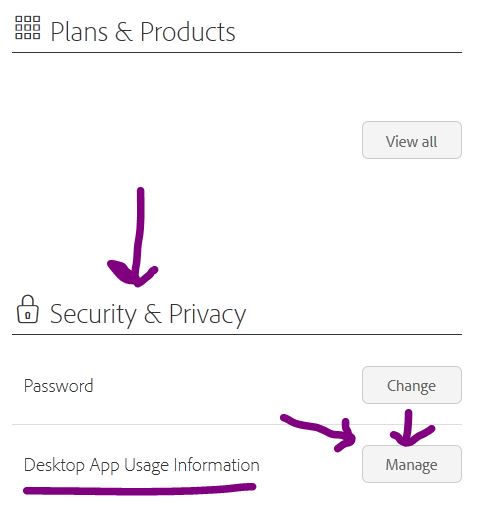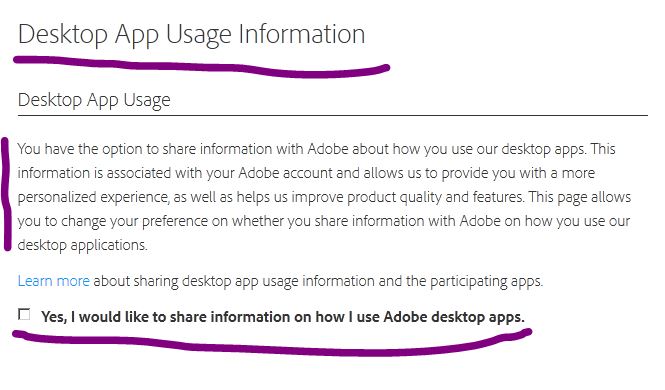Adobe is not exactly a champion of user privacy. In addition to the high profile hacking case of a few months ago, they also got caught red handed data hoarding on ebook users. And that’s before you consider all the issues with the Adobe PDF Reader software and Flash. So if you want to limit your exposure to Adobe’s data hoarding a little bit more, there is one option in your Adobe.com account profile that you can control, it tells Adobe not to collect “Desktop App Usage Information”. It is turned ON (ON = collect data) by default. I have no way of knowing how much of the spying/data-hoarding this will curtail, so don’t assume this is a catch-all safety net.
How to tell Adobe not to collect Desktop App Usage Information
1. Logon to your Adobe.com account and go to your personal account information page (or go directly to accounts.adobe.com).
2. Click on the “Manage” button next to “Desktop App Usage Information” and unclick the “Yes I would like to share information on how I use Adobe desktop apps”… Adobe explains in the vaguest of terms what they collect and how they use it.
3. That’s it! But again, keep in mind, this is not a catchall safety blanket!
NOTE: if you haven’t changed your Adobe.com password after the hacking incidents, their website may prompt you to do so before you can login.
Further Reading
A great resource to keep up with the latest in user privacy and how information is used/abused by various companies, agencies, and data hoarders is TechDirt.com.
If you are a Windows user and read Adobe DRMed ebooks on your computers, there is an alternative third-party ebook reading app (free) that you can use by connecting it to your Adobe ID (instead of Adobe’s Digital Editions that got caught phoning home a little too much) – Bluefire Reader.
There are actually a lot of places where you can legally get DRM-free e-books. There is a comprehensive list at Defective by Design. This includes Tor/Forge and O’Reilly (not Papa Bear, the techie one, Tim!)

